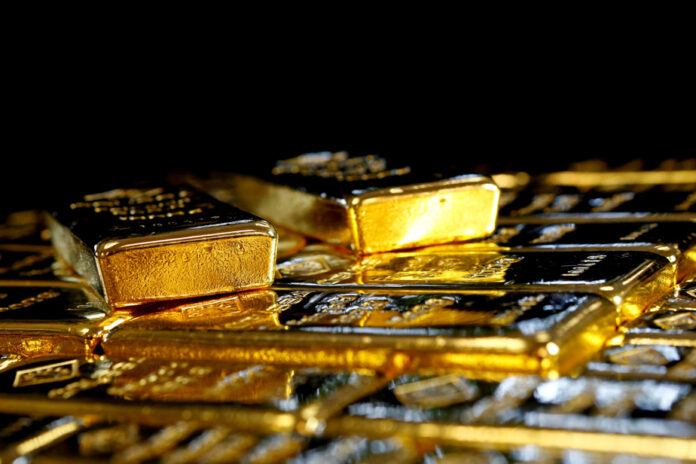When uncertainty increases, gold is popular. This is an undeniable trend, which we still observe today.
Over the past six months, the price of an ounce of gold has jumped 20% and is now approaching its all-time high of US$2,075 from 2020.
War in Ukraine, inflation and the threat of recession, there is no shortage of reasons to explain the popularity of gold with worried investors seeking shelter from the turmoil.
In 2022, central banks bought a record amount of gold, 1136 tons. That’s a 150% increase in just one year.
This frenzy continues this year. In January and February, the central banks continued their shopping, despite the increase in the price of the metal. Total central bank reserves increased by 74 tonnes in January and 52 tonnes in February.
This is the biggest start to the year for central bank gold purchases since 2010, according to the industry bible, the World Gold Council.
They keep gold in reserve to protect against inflation, currency fluctuations and to diversify their risks. Gold’s appeal to central banks has diminished over time: the metal is less liquid than currencies, it earns no return, and it must be stored securely, which puts it at a disadvantage. Canada, for example, has no gold in its reserves held at the Bank of Canada.
Central banks around the world were net sellers of gold in the market for two decades, until the turn of the 2000s. The trend has since reversed, and central banks have started buying gold again. But the world has changed: while the sellers were the richest countries, which had plenty in their reserves, the buyers are mostly emerging countries.
Russia and China are at the top of the most active countries on the gold market. Russia, above all, started to buy gold in quantity after the sanctions imposed on it after its invasion of Crimea in 2014.
Together, Russia and China made more than 50% of official gold purchases between 1999 and 2021, according to statistics from the International Monetary Fund.
Trade has increased between these two countries since the start of the war in Ukraine. Cut off from the Swift international payment system, which prevents it from making transactions in American dollars, Russia is increasing its exchanges with China, with a desire shared by the two countries to reduce their dependence on the American currency.
The dominance of the US dollar in the world is not threatened. At least not yet. The greenback accounts for 60% of the world’s central bank reserves, but this supremacy is beginning to cause concern and to be challenged.
That Russia and China try to impose their currencies in their trade is not surprising. What is more is that they have partners who are increasingly receptive to the idea of reducing their dependence on the US dollar.
Brazil and Argentina are talking about creating a common currency, India and the United Arab Emirates intend to trade in their respective currencies and even Saudi Arabia, the traditional ally of the United States, says it is open to sell its oil in yuan or currencies other than the US dollar.
The increase in gold purchases by central banks is a sign that major maneuvers are underway to dislodge the dollar from the throne it has occupied since the end of the First World War.















